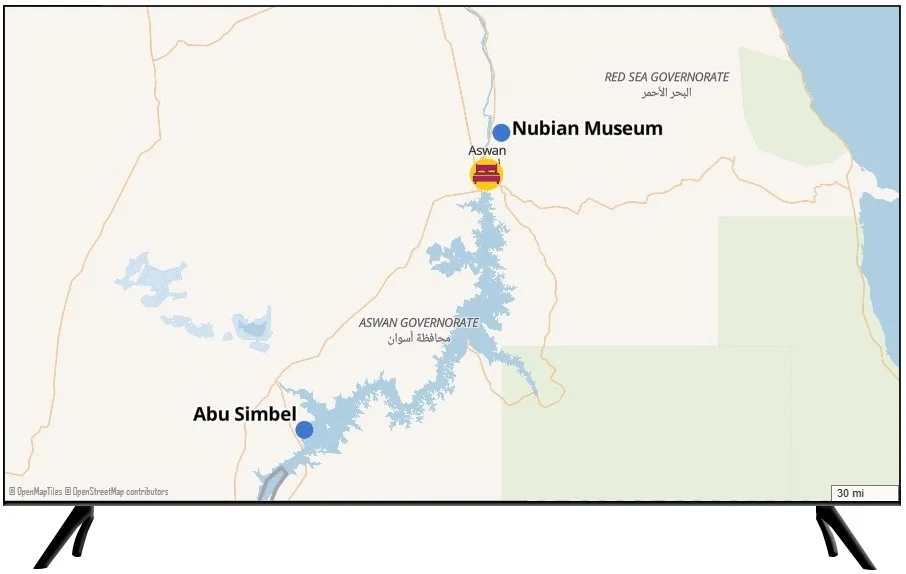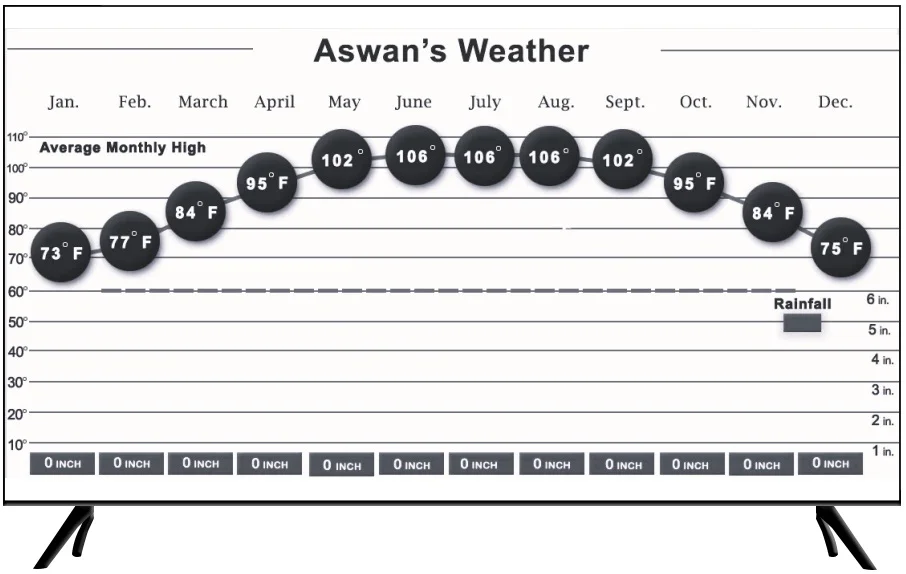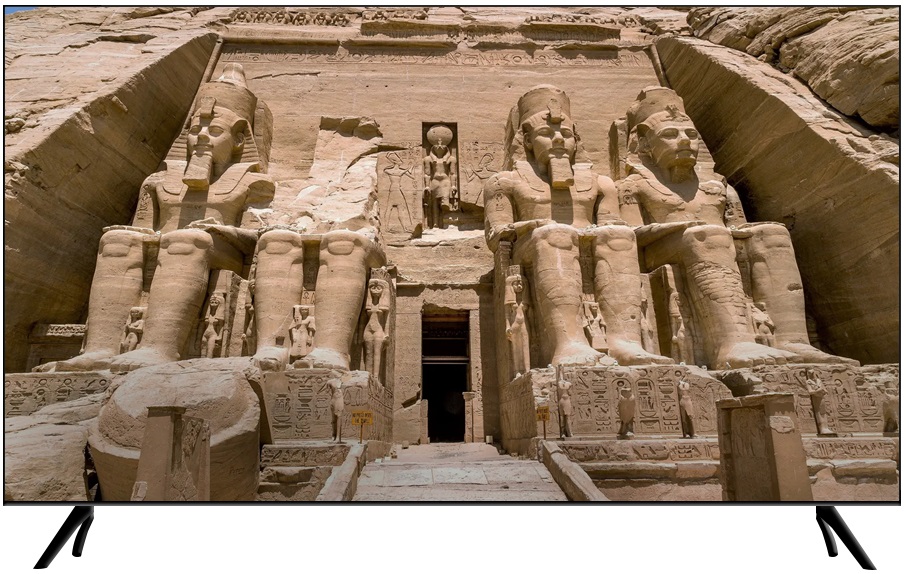


Day 7. Aswan – Abu Simbel Excursion
Overnight - Sofitel Legend Old Cataract
In the morning your Egyptologist Tour Director will accompany you to the Aswan airport and assist you in boarding the short flight to Abu Simbel. Arrive at Abu Simbel and you are ushered to your private vehicle and driven to Ramses II’s most awe-inspiring creation.
Located on the western banks of Lake Naseer, these colossal temples are still accessible to humanity because of one of the most amazing archaeological engineering feats of all time. Between 1964 and 1968 everything in and outside these temples were cut into massive blocks weighing up to 30 tons each and transported to a location 213 feet higher than where they were originally constructed. UNESCO and the Egyptian Government orchestrated a massive campaign with a large and diverse international team of specialists and accomplished this incomprehensibly difficult project so as to save the temples from the rising waters of the Nile to be caused by the impending opening of the Aswan High Dam.
The Abu Simbel Temples are part of the ‘Nubian Monuments’ UNESCO World Heritage Site, which also includes Philae, near Aswan. Built in the 13th Century BC over 20 years, these two temples were created to establish, in the minds of the Nubian people, Ramses II’s power and near-divinity, as well as the might of Egypt. The first temple, known as The Great Temple, has four massive 66-foot-tall statues of Ramses II seated on thrones at its entrance, and is widely considered to be one of the most beautiful temples in Egypt. Much smaller statues of the royal family, including his wife Nefertari, are situated around the seated monarchs’ legs. Amazing historic treasures await visitors inside the temple, which has a triangular layout reducing in scale as you go deeper to the main sanctum. There are beautiful statues, gorgeous bas-reliefs, impressive pillars, and objects devoted to the three ancient Egyptian Gods to whom Ramses II dedicated this temple.
A short distance away is The Small Temple, dedicated to Goddess Hathor and Queen Nefertari. This temple is only the second temple in Ancient Egypt’s many millennia long history that is dedicated to the consort of a king, and is one of the very few times such a major monument presented statues of the king and his queen that were equal in size. Surrounding the entrance are three 33-foot statues on each side, with statutes of Ramses II bookending the two statues of Queen Nefertari on both sides. The interior of the temple offers amazing treasures and is similarly beautiful as The Great Temple, although smaller in scale.
After exploring these wonders, you will return to the airport and fly back to Aswan, returning to your hotel for some relaxation.
In the late afternoon you are driven to Aswan’s Nubian Museum, an award-winning building with a midsize collection of amazing antiquities ranging from local geological wonders to a unique and impressive collection of Nubian, Pharaonic, Roman, Coptic, and Islamic antiquities. This fairly short visit will significantly enhance your understanding and appreciation of what you are experiencing in the Aswan region.
In the early evening you will board a traditional felucca and enjoy a cruise on the Nile and watch the spectacular sunset over this fabled region.
In the morning your Egyptologist Tour Director will accompany you to the Aswan airport and assist you in boarding the short flight to Abu Simbel. Arrive at Abu Simbel and you are ushered to your private vehicle and driven to Ramses II’s most awe-inspiring creation.
Located on the western banks of Lake Naseer, these colossal temples are still accessible to humanity because of one of the most amazing archaeological engineering feats of all time. Between 1964 and 1968 everything in and outside these temples were cut into massive blocks weighing up to 30 tons each and transported to a location 213 feet higher than where they were originally constructed. UNESCO and the Egyptian Government orchestrated a massive campaign with a large and diverse international team of specialists and accomplished this incomprehensibly difficult project so as to save the temples from the rising waters of the Nile to be caused by the impending opening of the Aswan High Dam.
The Abu Simbel Temples are part of the ‘Nubian Monuments’ UNESCO World Heritage Site, which also includes Philae, near Aswan. Built in the 13th Century BC over 20 years, these two temples were created to establish, in the minds of the Nubian people, Ramses II’s power and near-divinity, as well as the might of Egypt. The first temple, known as The Great Temple, has four massive 66-foot-tall statues of Ramses II seated on thrones at its entrance, and is widely considered to be one of the most beautiful temples in Egypt. Much smaller statues of the royal family, including his wife Nefertari, are situated around the seated monarchs’ legs. Amazing historic treasures await visitors inside the temple, which has a triangular layout reducing in scale as you go deeper to the main sanctum. There are beautiful statues, gorgeous bas-reliefs, impressive pillars, and objects devoted to the three ancient Egyptian Gods to whom Ramses II dedicated this temple.
A short distance away is The Small Temple, dedicated to Goddess Hathor and Queen Nefertari. This temple is only the second temple in Ancient Egypt’s many millennia long history that is dedicated to the consort of a king, and is one of the very few times such a major monument presented statues of the king and his queen that were equal in size. Surrounding the entrance are three 33-foot statues on each side, with statutes of Ramses II bookending the two statues of Queen Nefertari on both sides. The interior of the temple offers amazing treasures and is similarly beautiful as The Great Temple, although smaller in scale.
After exploring these wonders, you will return to the airport and fly back to Aswan, returning to your hotel for some relaxation.
In the late afternoon you are driven to Aswan’s Nubian Museum, an award-winning building with a midsize collection of amazing antiquities ranging from local geological wonders to a unique and impressive collection of Nubian, Pharaonic, Roman, Coptic, and Islamic antiquities. This fairly short visit will significantly enhance your understanding and appreciation of what you are experiencing in the Aswan region.
In the early evening you will board a traditional felucca and enjoy a cruise on the Nile and watch the spectacular sunset over this fabled region.

